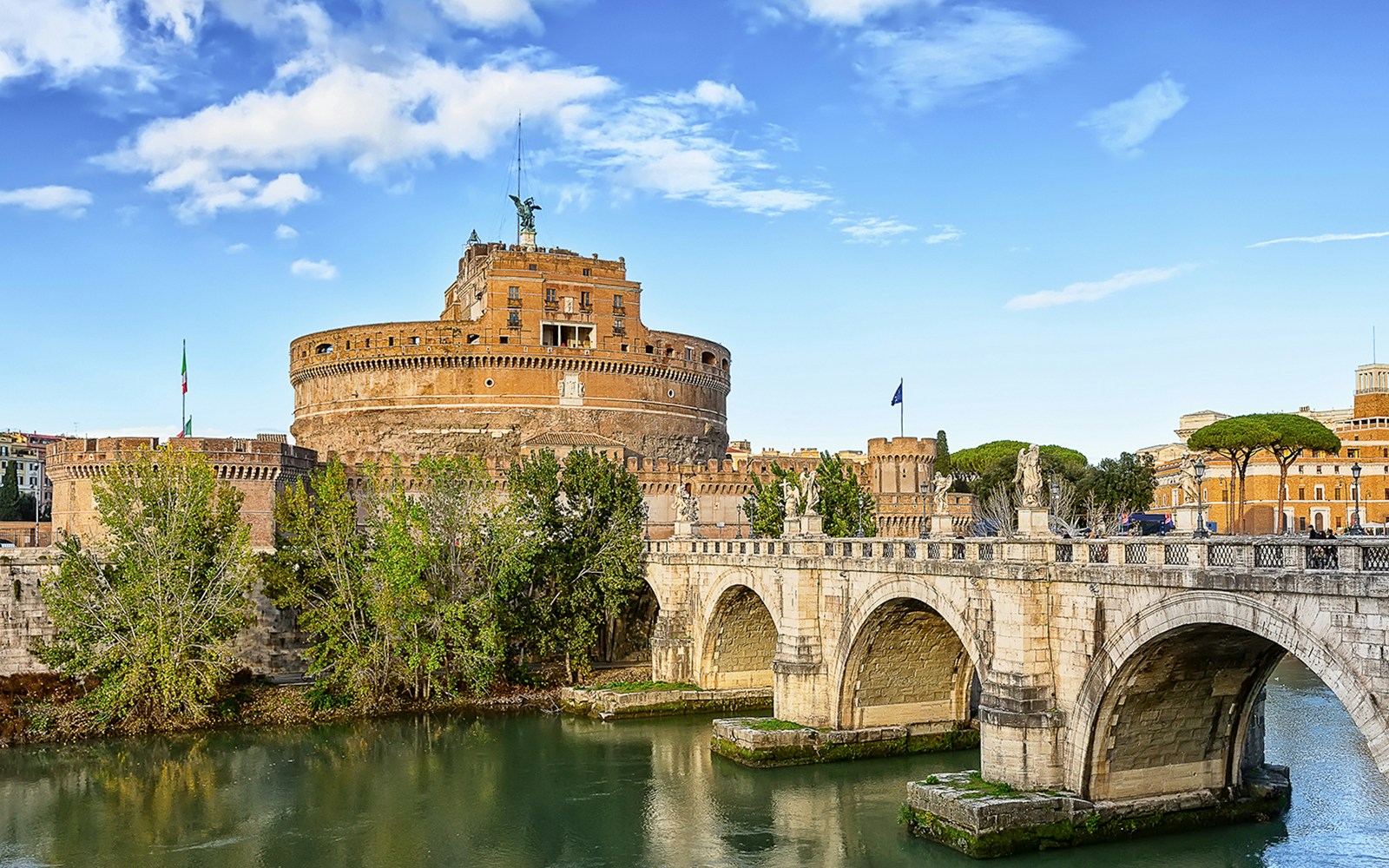Legend says the spirit of Beatrice Cenci, executed in 1599, still haunts the bridge on the anniversary of her death.
Ponte Sant'Angelo: The Bridge to Castel Sant'Angelo
Included with Castel St. Angelo tickets
Timings
RECOMMENDED DURATION
2 hours

Included with Castel St. Angelo tickets
Timings
RECOMMENDED DURATION
2 hours

Spanning the Tiber River in the heart of Rome, the Ponte Sant’Angelo is a striking pedestrian bridge that connects the city center to the majestic Castel Sant’Angelo. Commissioned by Emperor Hadrian in 134 AD to provide a grand approach to his mausoleum, the bridge has stood for nearly two millennia, witnessing Rome’s evolution through emperors, popes, and centuries of change. Its original name, Pons Aelius, reflects its ancient Roman origins.
Today, Ponte Sant’Angelo is both a functional crossing and a beloved open-air museum. Adorned with ten magnificent angel statues designed by Gian Lorenzo Bernini and his pupils, the bridge draws visitors for its artistic beauty and romantic views. It remains one of Rome’s most photographed and atmospheric walkways.
Ponte Sant’Angelo is a pedestrian-only bridge with free access, open to all at any time. It’s an easy and scenic walk from the city center to Castel Sant’Angelo. Take your time crossing the bridge—pause to admire the ten angel statues, each holding a symbol of the Passion, and read the Latin engravings that give the bridge its timeless character. It’s more than just a route—it’s a quiet, open-air gallery in the heart of Rome.
Pope Clement VII erected a toll on Ponte Sant'Angelo in the 16th century and used the proceeds to erect statues of St. Peter and St. Paul. The bridge was embellished in 1688 with ten angel statues, five on either side of the bridge, all sculpted by Lorenzo Bernini. Each angel carries an emblem of Jesus' death and suffering.
At the entrance of Ponte Sant’Angelo stand two significant statues—St. Peter and St. Paul—each offering symbolic protection to those crossing the bridge. St. Peter holds the keys to heaven, reflecting his role as the first pope and the keeper of the gates. Opposite him, St. Paul is depicted with a sword, a reference to his martyrdom and his fearless mission to spread the teachings of Christianity.
These figures are far more than artistic flourishes; they embody the spiritual foundation of the Church. Placed along a route once walked by countless pilgrims, their presence serves as a powerful reminder that divine justice is not blind—those who walk in humility and faith are protected, while the proud are called to account.
Ponte Sant'Angelo was built by Emperor Hadrian in 134 AD.
Yes, Ponte Sant'Angelo is one of just two ancient Roman Tiber River bridges that still survive today.
The angel statues symbolize and depict scenes from the Passion of Christ. They were commissioned by Pope Clement IX to replace earlier stucco versions.
Ponte Sant'Angelo started off serving municipal functions. It then became the bridge that granted direct access to St. Peter’s Basillica. The bridge was later used to expose the bodies of those executed in the adjoining Piazza del Ponte. Now, it connects the city with Castel Sant'Angelo and the Vatican city.
The bridge leads directly to Castel Sant’Angelo, which serves as the sole entrance to the castle. Visitors must cross Ponte Sant’Angelo to access the attraction.
Since Ponte Sant’Angelo is a pedestrian bridge, you don’t need tickets to access the bridge itself.
To avoid crowds and capture the best photographs, it's recommended to visit Ponte Sant’Angelo early in the morning or late in the afternoon. These times offer softer lighting and a more peaceful atmosphere.
Nearby attractions include Castel Sant’Angelo, St. Peter's Basilica, and the Vatican Museums. The bridge also offers picturesque views of the Tiber River and the historic city center of Rome.
Yes, Ponte Sant’Angelo is wheelchair accessible.